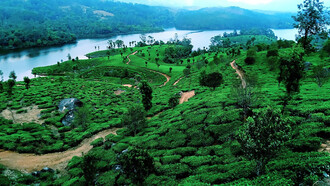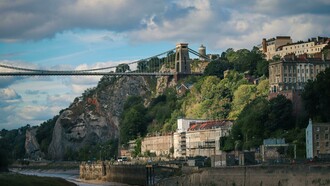Route: Kolkata- Howrah Dist. (via Shibpur, Chaterjeehat, Barui Para, Ramraja Tala, Jagacha, Satragachi) – Kharagpur – Ghatshila – Jamshedpur.
Distance: 296 Kms.
Driving Time: 7 hours.
Kolkata
Kolkata is the largest city of India and by now may be ahead of London as the largest city in the British Commonwealth. It’s often an ugly and desperate place that to many people sums up the worst of India, yet it’s also one of the most fascinating centers of India and has some scenes of rare beauty. In the days of yore, Kolkata was the capital of British India, but, unlike Delhi, Kolkata is not an ancient city with a long history and many impressive relics. In fact, Kolkata is really a British invention dating back to some 300 plus years.
Much of Kolkata’s most enduring developments took place between 1780 and 1820. Later in the 19th century, however, Bengal became the a spark point in the struggle in the struggle for India’s independence and this was the main reason for the decision to transfer the capital to New Delhi in the year 1911. Loss of political power did not alter Kolkata’s economic control and the city continued to prosper until after World War II. Ideally Kolkata with its varied charms is an ideal base from where to embark on a journey of discovery.
What to See:
Victoria Memorial, Nirmal Hriday, Kalighat, Dakshineswar temple, Pareshnath temple, Birla temple, Nakhoda mosque, Belur Math, Armenian church, St.Paul’s Cathedral, Sahid Minar, Indian Museum, Asiatic Society, Netaji Museum, Birla Planetarium, Race Course, Eden Gardens, National Library, Botanical Garden, Fort William, Marble Palace, Jorasanko, Rabindra Sarobar, Science City, Nandan, Aquatica, Nalban Boating Complex, BBD Bagh, Writer’s Building, Maidan, High Court, Netaji Indoor Stadium, College Street, New Market, Burra Bazaar, Nicco Park.
Where to Stay:
ITC Sonar Bangla Sheraton & Towers, Hyatt, Swiss Hotel,Vedic Village, Oberoi Grand, Taj Bengal, Park Hotel, Hotel Hindustan International, Kenilworth Hotel are some of Kolkata’s most outstanding hotels. Apart from up market hotels, hundreds of mid budget and budget category hotels are also available in the city of Kolkata.
Where to Eat:
Sourav’s, Mainland China, Kasturi, 5 Star, Amber Bar & Restaurant, Amina, Aqua Java, Badshah, Banzara, Bijoli Grill, Biriyani House, Blue Fox, Charnock’s, China Bowl, Amber, Chung Wah, Chopsticks, Chiniz Qwizin, Dim Sum, Copper Chimni, Haldiram’s Pure Food, Moulin Rouge, Oh! Calcutta, Swabhumi Heritage Plaza, Trinca’s.
What to Buy:
Tat Sarees and a variety of Bengali sweets.
Howrah District (via Shibpur, Chaterjeehat, Barui Para, Ramraja Tala, Jagacha, Satragachi)
As you leave behind the cacophony of Kolkata city driving upfront on the Kona Expressway (NH6), you will come across miniscule towns of Howrah district like Shibpur, Chaterjeehat, Barui Para, Ramraja Tala, Jagacha and Satragachi. These peripheral towns may not offer much in terms of tourism, but they do have a character courtesy the bustling bazaars, sweet shops and rickety cycle rickshaws wending their way through the intricate labyrinthine roads and alleyways.
Howrah District Notes
Howrah happens to be the smallest district of West Bengal and also the second largest city of West Bengal. It is referred to as the twin of Kolkata and is conspicuous by its rich historical past that dates back to 500 years. The name itself is derived from a village named “Harirah” which was located in the vicinity of modern day Howrah City. Venetian explorer Ceasare Federici was the first European who made reference to a place called Bator in his journal way back in the year 1578 AD which is today identifiable with the modern day Howrah City and its surroundings.
The Bengal Council of East India Company, on the appointment of the Emperor Farrukshiyar to the throne of Delhi in 1713, sent a group of representative to him requesting for a settlement of the villages 'Salica' (Salkia), 'Harirah' (Howrah), 'Cassundeah'(Kasundia), 'Ramkrishnopoor' (Ramkrishnapur), and 'Battar' (Betor) to the west of river Bhagirathi and once the settlement was officially granted in favor of the East India Company these places developed quickly under the watchful eyes of the British East India Company and served as entry and exit points of European seafarers who conducted business with the then Bengal. Needless to say, Howrah city and the district itself are strewn with numerous Raj era edifices, most of them unfortunately in utter ruins. Nonetheless, the District of Howrah stands out as one of British India’s most prized neighborhood.
What to See:
Some of the most enduring tourist landmarks of Howrah Dist. are the Howrah Railway Station (amongst the busiest in India),the iconic Howrah bridge, Botanical Garden, Bengal Engineering College, Belur Math (headquarters of the worldwide Ramakrishna Math & Mission), Vidyasagar Setu, Gadiara (confluence of the Hooghly and the Rupnarayan rivers), Garchumuk (confluence of the Hooghly and the Damodar river) to name just a few.
Where to Eat:
Since most of the towns in Howrah Dist. that you will be crisscrossing being miniscule small towns, there aren’t any up-market restaurants. However, there are numerous roadside “Cha Dokan” or teashops, where light snacks can be savored. For meals, don’t experiment. Stick to fish curry and rice, which is the staple food of Bengal and which is served hot in your plate.
What to Buy:
Traditional Bengali sweets like Mishti Doi, Lady Kennie, Kalo Jam, Lord Chom Chom etc…
Kharagpur
Leaving behind the dusty roads of Howrah Dist. as you speed off along NH6 past Nimbra High School via Ankurhati, Paniara, Uluberia, Bagnan and Naupala, you enter the district of Mednipur via Kharagpur. Kharagpur town is best known for the Indian Institute of Technology (IIT), which happens to be one of India’s best centers of higher education in the domain of technology. The town is beautifully laid out and well planned. It is a town where the harmony of industrial growth and ecological preservation has been impeccably implemented. Separate clusters of land space have been earmarked for residential dwelling, shopping and industrial belts while the railway station is one of the largest in India.
What to See:
Khargeshwar Shiva Temple, IIT, Kharagpur Railway Station.
Where to Eat:
Tamrolipto, Hotel Park, Little Sisters, Great India Hotel and Olive are some of the most popular eating joints of Kharagpur.
What to Buy:
Locally manufactured handicraft items.
Ghatshila
You will come across the town of Ghatshila as you drive upfront from Kharagpur on the NH33. The name Ghatshila literally means “stone embankment” as the town is ideally located on the banks of the river Subarnarekha. On the distant horizon are the hill ranges standing like sentinels. Ghatshila has a sizeable tribal presence and intriguing tribal hamlets dot the landscape of Ghatshila and its surroundings. Ghatshila’s salubrious climate has attracted the typical “Bengali Babus” for generations together who still camp here for better health and longevity.
On the outskirts of Ghatshila there is the Panchapandava hills where the Pandavas had lived for some time during their days in exile. The fabulous palace of the erstwhile Maharajas of Ghatshila, which now serves as a court is a place worth visiting. Also, make it a point to visit the densely forested Dahijora and Mosabani forests for a haunting wilderness experience.
What to See:
Royal palace, Temple of Raniki, Sri Ramakrishna Temple, Bibhuti Sanskriti Parishad, Dharagiri Waterfalls.
Where to Stay:
Hoilday homes abound at Ghatshila due largely to its salubrious climate and some of the most popular places to stay are Mukul Bhawan, Safari Lodge, Hotel Anindita, Matridham, Hotel Aranayak, Hotel Jyoti Palace, Hotel Randhawa and the Forest Rest House.
Where to Eat:
Most lodges and holiday homes offer wholesome food that may be availed by visitors.
What to Buy:
Indegenously manufactured tribal handicraft products.
Jamshedpur
On the final leg of your journey as you leave behind Ghatshila meandering roads, continue to drive ahead on the Dimna Road along NH33. From Ghatshila, the town of Jamshedpur is a mere 12 Kms. The steel city of Jamshedpur is home to one of India’s most advanced steel industries – the TATA Iron & Steel Co. (TISCO). The factory may be visited by taking prior permission from the resident Manager. Jamshedpur has named thus in the memory of Jamshedji Tata, who pioneered India’s industrial resurgence. The city itself is like a dream landscape and if you happen to coincide your visit to India’s “Steel City” on 3rd March, the festive atmosphere celebrating the birthday of Jamshedji Tata makes for a truly marvelous experience. The city is encircled by Dalma hills, the shimmering Dimna lake, rivers Subarnarekha and Kharkai.
What to See:
TISCO, Jubilee Park, Dimna Lake, Hudco Dam (8 Kms.) and Dalma Hills.
Where to Stay:
Upmarket hotels like Ginger Hotel (Tel: 0657-6663333), Yashwee International (Tel: 0657-2431151, Sonnet (tel:0657-6619000), Park Plaza (Tel: 0657-2321323), Mansarovar (Tel: 0657-2428946), Fortune Hotel(Tel:0657-3988444) offer quality accommodation.
Mid budget category hotels abound at Jamshedpur and some of the popular once are Modern Hotel, Hotel Siddharth, Hotel Nalanda, Hotel Nataraj, Kohinoor Hotel, Hotel Centre Point Hotel Boulevard, Hotel Raj, Hotel Ashok Green and Ganesh Star. The TISCO Guest house is much preferred by the upmarket tourists and one can also find quality accommodation at the Dimner Lake House.
For budget category tourists and backpackers there are numerous Dharamshalas at Jamshedpur.
Where to Eat:
Anand (Tel:0657-2429098), Godavari Restaurant (Tel:0657-2422314,2422372),Kalash Restaurant (Tel:0657-2428934), Aashirwad Restaurant (Tel:0657-3204105).
Fast Food Eating Joints:
Burger King Restaurant (Mob:+(91)-9431374494+(91)-(9431374494), Cafe Coffee Day (Tel:0657-2432355), Ghosh’s Chimney (Mob: +91-9431149649), Uncle’s Kitchen (Tel: 0657-2224224).
Chinese Cuisine – 10th Mile, Asian Inn, Blooms Restaurant.
Italian: Hong Kong Restaurant (Tel:0657-2222329).
Thai: Equinox Restaurant (Tel: 0657-2226932).















